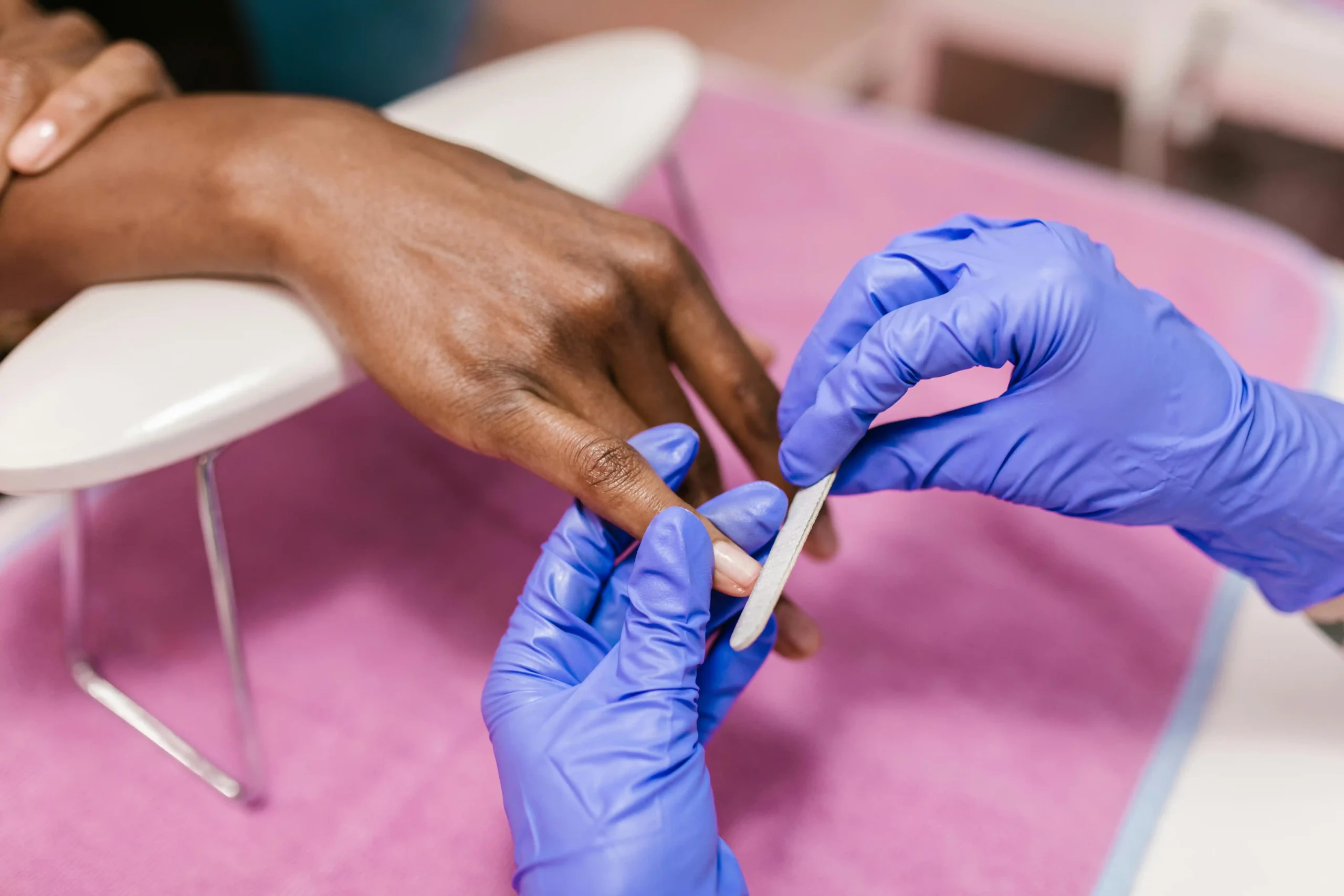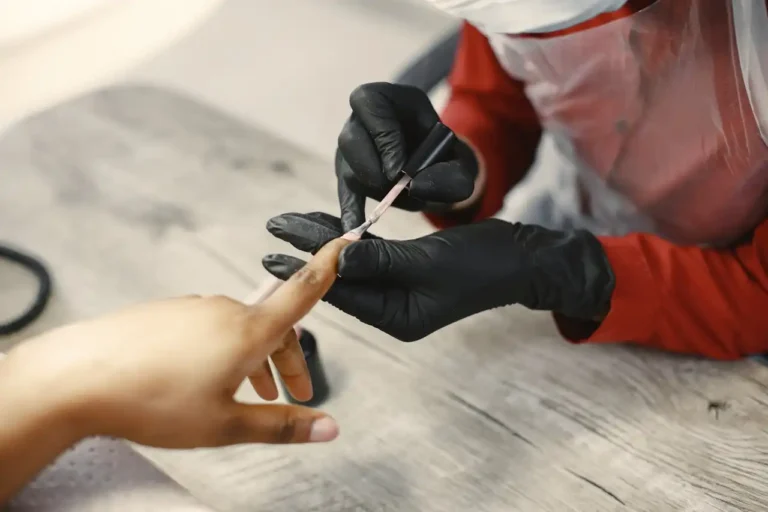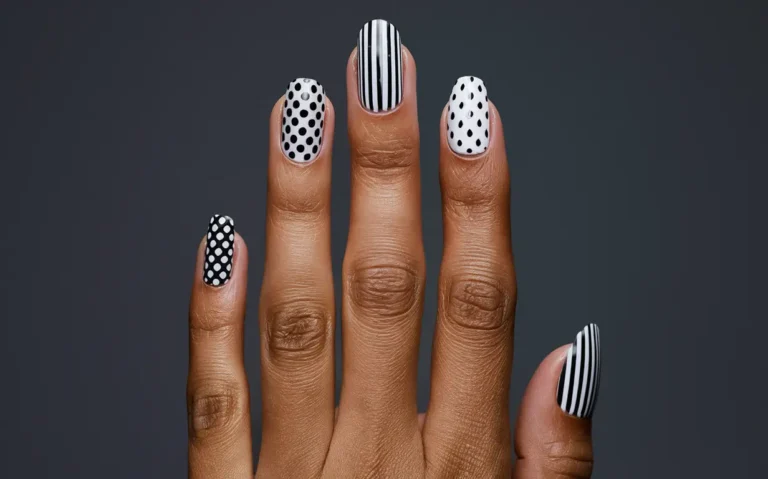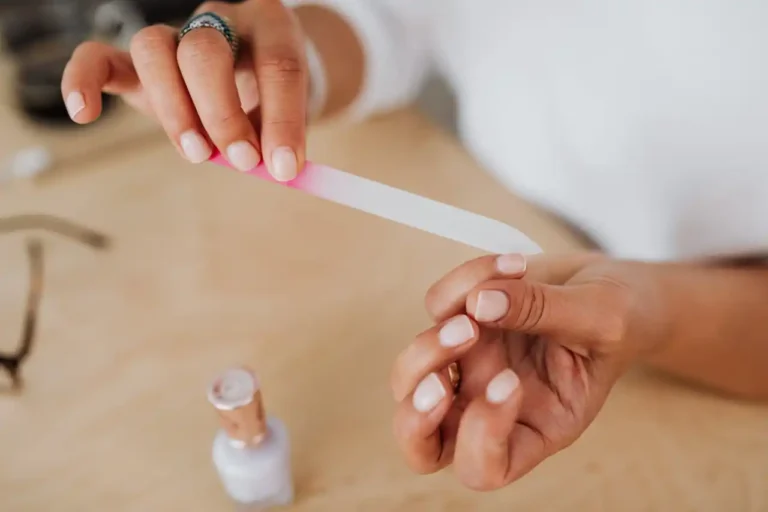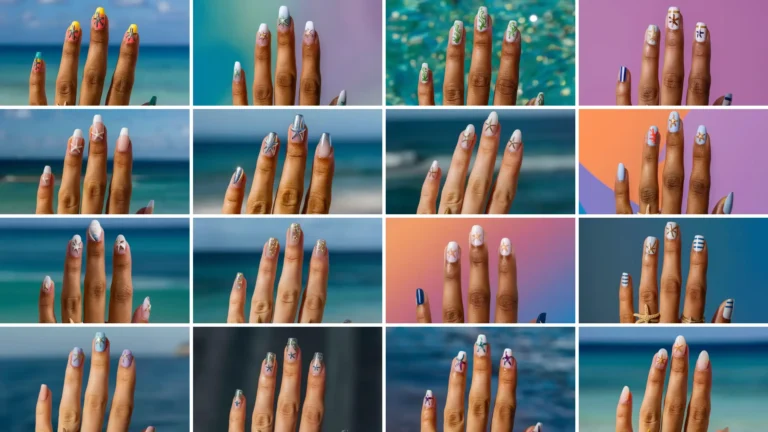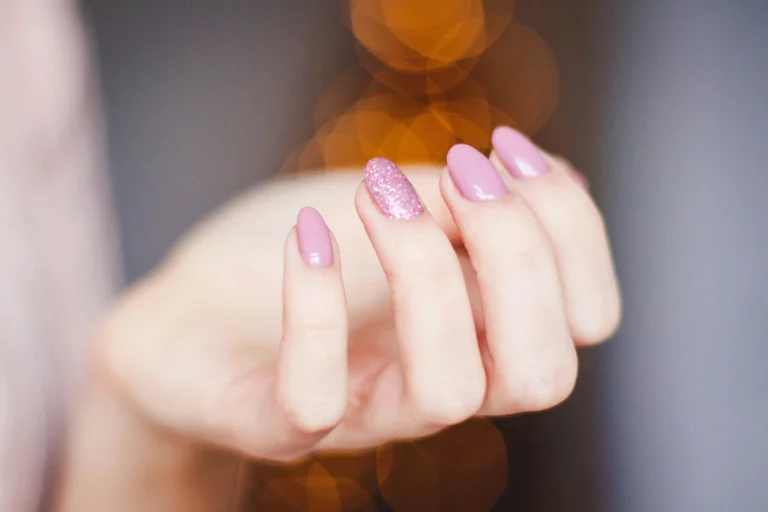Why Your Nails Peel & How to Fix It
You’ve probably noticed it before – those frustrating layers of your nails that start peeling away like old paint.
It’s annoying, unsightly, and can make you self-conscious about your hands. The good news?
Nail peeling is incredibly common and almost always fixable with the right approach.
Understanding What Causes Your Nails to Peel
Excessive Water Exposure

Your nails absorb water just like a sponge, and too much moisture can wreak havoc on their structure.
When you spend long periods with your hands in water – whether you’re washing dishes, swimming, or taking extended baths – your nails expand.
As they dry out afterward, they contract back to their original size.
This constant expansion and contraction weakens the bonds between the nail layers.
Think of it like repeatedly bending a piece of paper back and forth until it tears. Your nails experience the same stress, leading to those pesky peeling layers.
You might notice this problem gets worse during winter months when you’re frequently washing your hands or after a beach vacation where you’ve spent hours in the pool.
Even activities like cleaning your house or doing laundry without gloves can contribute to this moisture damage.
The key is recognizing that water isn’t inherently bad for your nails – it’s the excessive, repeated exposure without proper protection that causes problems.
Chemical Damage from Everyday Products
You encounter nail-damaging chemicals more often than you might realize.
Harsh cleaning products, acetone-based nail polish removers, and even some hand sanitizers can strip away your nail’s natural oils and proteins.
These substances break down the keratin structure that keeps your nails strong and intact.
Nail polish removers are particularly problematic because acetone is incredibly drying.
Each time you remove your polish, you’re essentially dehydrating your nails.
If you’re someone who changes nail colors frequently, this repeated exposure can accumulate and lead to significant peeling.
Household cleaners pose another threat.
The chemicals in bathroom cleaners, kitchen degreasers, and laundry detergents can penetrate your nail layers and weaken them from within.
You might not notice the damage immediately, but over time, these exposures add up.
Even seemingly innocent products like certain soaps and shampoos can contribute to nail damage if they contain harsh sulfates or other drying agents.
Nutritional Deficiencies That Affect Nail Health
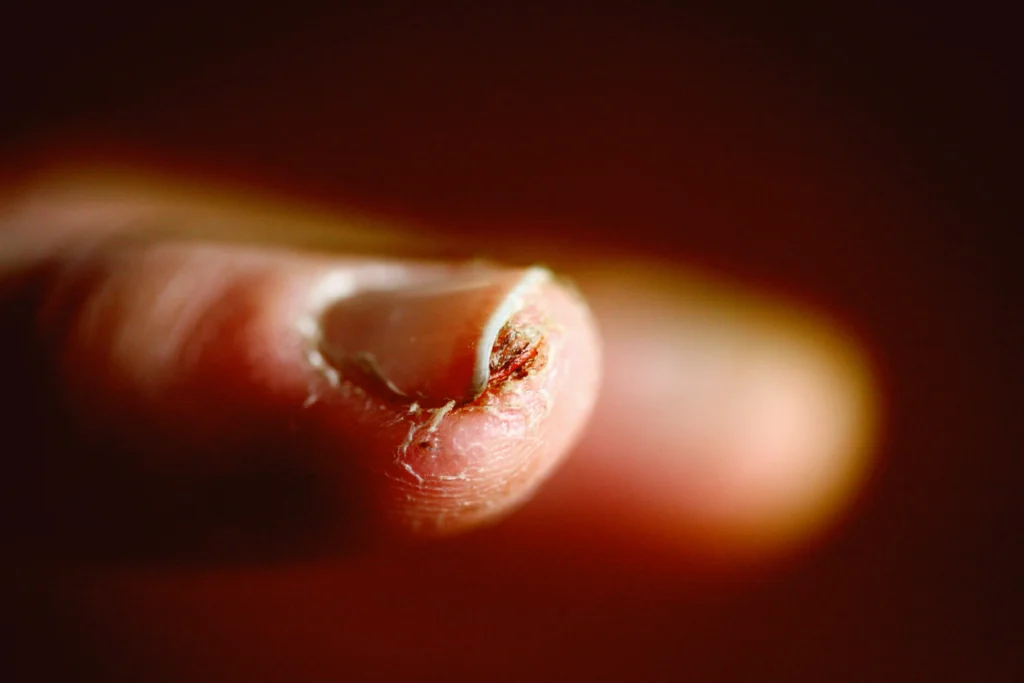
Your nails are essentially windows into your overall health, and certain nutritional deficiencies can manifest as peeling, weak nails.
Biotin deficiency is one of the most common culprits.
This B-vitamin plays a crucial role in keratin production, and without enough of it, your nails become brittle and prone to splitting.
Iron deficiency can also cause nail problems.
When your body doesn’t have enough iron, it prioritizes sending this mineral to more vital organs, leaving your nails undernourished.
You might notice not just peeling, but also pale nail beds or unusual nail shapes.
Protein deficiency affects nail health too, since nails are made primarily of keratin, a type of protein.
If you’re not getting enough protein in your diet, your body can’t manufacture strong, healthy nails.
This is particularly common in people following very restrictive diets.
Other nutrients like zinc, vitamin E, and omega-3 fatty acids all contribute to nail health.
A well-rounded diet typically provides these nutrients, but certain conditions or dietary restrictions can lead to deficiencies.
Physical Trauma and Aggressive Nail Care
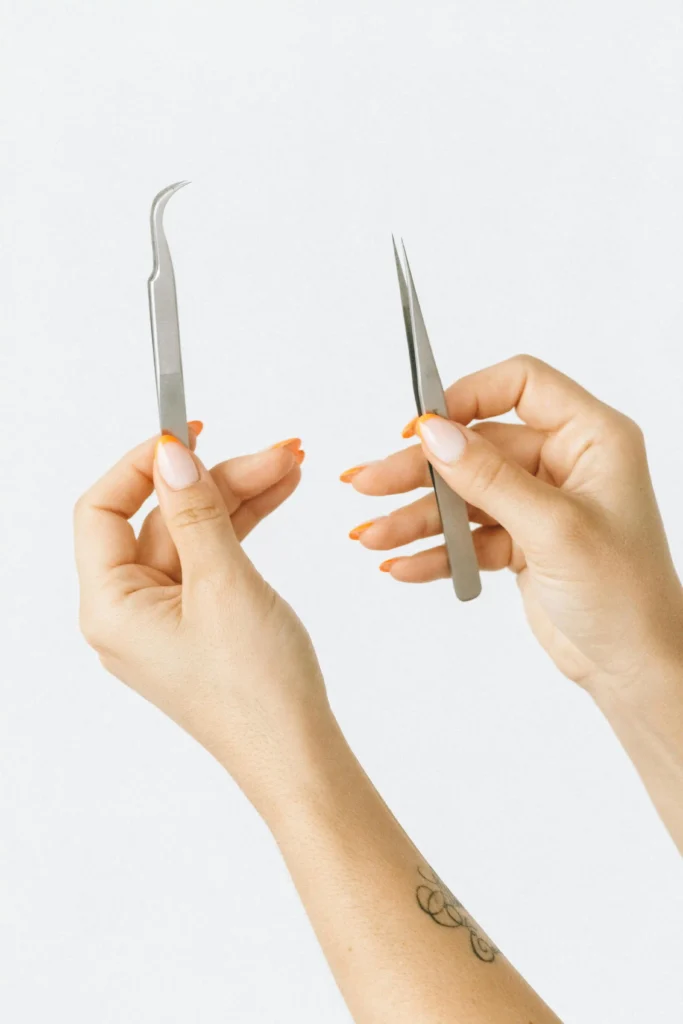
Sometimes the damage comes from how you treat your nails directly.
Using your nails as tools – opening cans, scraping off stickers, or prying things apart – creates micro-tears that eventually lead to peeling.
Your nails aren’t designed for these tasks, and repeated trauma weakens their structure.
Aggressive manicure techniques can also cause problems. Filing back and forth instead of in one direction creates tiny fractures along the nail edge.
These fractures spread inward over time, causing layers to separate and peel away.
Cuticle cutting, especially when done incorrectly, can damage the nail matrix where new nail cells form.
This damage can result in irregular nail growth and increased peeling. Even pushing cuticles back too aggressively can cause harm.
Picking at your nails or cuticles creates a cycle of damage.
Once you start peeling away loose skin or nail layers, you create more rough edges that tempt you to pick even more.
How to Fix Your Peeling Nails
Immediate Repair Strategies
When you notice peeling starting, your first instinct might be to pull or bite off the loose pieces. Resist this urge at all costs.
Instead, use a fine-grit nail file to gently smooth away any rough edges. File in one direction only, never back and forth, to prevent creating more damage.
Apply a strengthening base coat or nail treatment specifically designed for damaged nails.
These products contain proteins and vitamins that help bind the nail layers together while providing a protective barrier.
Look for treatments containing formaldehyde-free hardeners, as formaldehyde can actually make peeling worse over time.
Keep your nails short while they heal. Longer nails are more prone to catching and tearing, which can worsen existing peeling.
A shorter length reduces stress on the nail structure and gives damaged areas time to grow out.
Consider applying a thin layer of clear nail polish or a nail strengthener every few days.
This creates a protective shell that holds loose layers in place while new, healthy nail grows underneath.
Deep Moisturizing Treatments
Your nails need moisture just like your skin does. Invest in a high-quality cuticle oil or nail treatment cream and use it religiously.
Apply it at least twice daily, massaging it into your nails and cuticles to improve circulation and hydration.
Look for products containing jojoba oil, vitamin E, or lanolin, as these ingredients penetrate deeply and provide long-lasting moisture.
Avoid products with alcohol, as these can further dry out your nails.
Try overnight treatments for severely damaged nails.
Apply a thick layer of cuticle cream or even petroleum jelly to your nails before bed, then wear cotton gloves to prevent the product from rubbing off.
This intensive moisture treatment can significantly improve nail condition over time.
Create your own nail soak using warm water mixed with a few drops of olive oil or sweet almond oil.
Soak your fingertips for 10-15 minutes once or twice a week to provide deep hydration.
Protective Measures During Daily Activities
Prevention is always better than treatment, so start protecting your nails during everyday activities.
Wear rubber gloves whenever you’re cleaning, washing dishes, or working with chemicals.
Choose gloves with cotton linings to prevent your hands from getting sweaty and creating more moisture problems.
Apply hand cream immediately after washing your hands, and don’t forget to rub some into your nails and cuticles.
Keep travel-sized hand cream in your purse, car, and desk drawer so you’re never without protection.
When swimming, apply a layer of clear nail polish before entering chlorinated water.
Chlorine is particularly damaging to nails, and this protective barrier can make a significant difference.
Consider wearing gloves during gardening, crafting, or any activity that might expose your nails to dirt, chemicals, or repeated friction.
Professional Treatment Options
If your nail peeling is severe or doesn’t improve with home care, consider professional treatments.
A skilled nail technician can assess your nail health and recommend appropriate treatments.
Professional strengthening treatments often contain higher concentrations of active ingredients than over-the-counter products.
Some salons offer paraffin treatments specifically for nail health.
The warm paraffin deeply moisturizes while the heat improves circulation to the nail bed, promoting healthy growth.
Professional manicures can also help when done correctly.
A skilled technician knows how to properly shape and care for damaged nails without causing further harm.
They can also apply strengthening treatments that last longer than DIY applications.
For persistent problems, dermatologists can prescribe stronger treatments or investigate underlying health conditions that might be contributing to nail issues.
Long-Term Prevention Strategies
Developing Healthy Nail Habits
Building good nail care habits takes time, but the results are worth the effort.
Set reminders to apply cuticle oil daily until it becomes second nature.
Keep nail files in strategic locations – your desk, purse, and bathroom – so you can address rough edges immediately instead of picking at them.
Establish a weekly nail care routine that includes gentle filing, moisturizing treatments, and inspection for any developing problems.
Consistency is key to maintaining healthy nails.
Learn to use your fingertips instead of your nails for tasks like typing, dialing phones, or opening containers.
This simple change can dramatically reduce nail trauma over time.
Make nail health part of your overall wellness routine, just like skincare or dental care. Your nails deserve the same attention and consistency.
Dietary Changes for Stronger Nails
Focus on eating a balanced diet rich in the nutrients your nails need to grow strong and healthy.
Include plenty of protein sources like lean meats, fish, eggs, and legumes.
If you’re vegetarian or vegan, ensure you’re getting complete proteins through proper food combinations.
Add biotin-rich foods to your diet, such as eggs, nuts, seeds, and sweet potatoes.
While biotin supplements are popular, getting nutrients from whole foods is often more effective and provides additional benefits.
Include foods high in iron, like spinach, red meat, and lentils, especially if you’ve been diagnosed with iron deficiency.
Pair iron-rich foods with vitamin C sources to improve absorption.
Consider omega-3 rich foods like salmon, walnuts, and flaxseeds, which help maintain nail flexibility and prevent brittleness.
Creating the Right Environment
Your environment plays a bigger role in nail health than you might think.
Use a humidifier during dry months to maintain optimal moisture levels in your home. Dry air can contribute to nail brittleness and peeling.
Keep the temperature in your home and workplace moderate.
Extreme temperatures, whether hot or cold, can stress your nails and make them more prone to damage.
Be mindful of air conditioning and heating systems, which can create very dry environments.
If you work in an office with particularly dry air, keep hand cream at your desk and use it frequently.
Pay attention to seasonal changes and adjust your nail care routine accordingly.
You might need more intensive moisturizing treatments during winter or extra protection during summer swimming season.
When to Seek Professional Help
Recognizing Serious Nail Problems
While most nail peeling is cosmetic and easily treatable, some situations warrant professional attention.
If your nails are peeling along with other symptoms like changes in nail color, thickness, or shape, you should consult a healthcare provider.
Nails that peel excessively despite proper care might indicate underlying health conditions like thyroid disorders, autoimmune diseases, or severe nutritional deficiencies.
Don’t ignore persistent problems that don’t improve with home treatment.
If you notice signs of infection around your nails – redness, swelling, warmth, or pus – seek medical attention promptly.
Infected nail areas can become serious if left untreated.
Sudden changes in nail health, especially if they affect multiple nails simultaneously, could indicate systemic health issues that require medical evaluation.
Finding the Right Professional
Start with your primary care physician if you suspect underlying health issues might be contributing to your nail problems.
They can run blood tests to check for nutritional deficiencies or other medical conditions.
For cosmetic nail concerns, a licensed nail technician with additional training in nail health can provide valuable guidance and treatments.
Look for professionals who prioritize nail health over purely aesthetic concerns.
Dermatologists specialize in nail disorders and can diagnose and treat more serious conditions.
They can also prescribe stronger treatments than what’s available over-the-counter.
If you have diabetes or other conditions that affect circulation, always consult with your healthcare provider before trying new nail treatments, as you may be at higher risk for complications.
Conclusion
Healthy nails don’t happen overnight, but with consistent care and the right approach, you can overcome peeling and enjoy strong, beautiful nails again.

